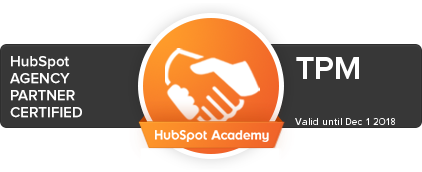Recent trends in data collection and consumer privacy protection are forcing brands to change how they interact with consumers. Marketers are on the front line of those transitions — working to find new (and previously overlooked) data collection opportunities and adapting their strategies to fit changing standards. And zero-party data should be top of mind for marketing teams.
Lawmakers and consumers alike are raising new and expanded privacy concerns about the way digital data is collected. (The majority of Americans feel their personal data has become less secure.) In response, tech companies like Facebook, Google, Apple, and others are offering their users new privacy-preserving options. But these new developments in privacy legislation will make it harder for brands to access user data and create personalized campaigns.
To put it simply, tech companies are moving away from tracking users around the internet. What does that mean for your company? Keep reading to learn about different types of data collection and the importance of zero-party data as tech companies shift towards protecting consumer privacy.
The Type of Data You Have Matters
I’ve already mentioned zero-party data. And first-, second-, and third-party data are common terms in the marketing world. But what do they really mean?

First-Party Data
First-party data is information companies get directly from their audience, typically from examining behaviours like:
- Transactions
- Social media interactions
- Email-based subscriptions
- Website traffic
First-party data is highly valuable and reliable because it comes directly from your audience — every time a potential customer visits your site, likes your social media post, or adds something to their online cart, you learn more about them. And as the marketer who collected it, you are the sole owner of the data, making privacy concerns minimal.
Second-Party Data
Second-party data is data you did not collect — it is essentially first-party data given to you through a secondary source.
How do you get second-party data? It is often exchanged between organizations who share similar goals and will mutually benefit from the exchange. Since both organizations share interests, sharing data will be beneficial to your customers and your business.
A common example of second-party data is paid search marketing (also known as pay-per-click advertising) with a search engine like Google. Google shares potential customer keyword data with you within a commercial agreement.
Third-Party Data
Third-party data is data collected by an outside source that does not have a direct connection to your potential customer. The source organizes the data into categories and segments and sells it to brands.
Third-party data can often be incredibly inaccurate and messy, and it is not exclusive to the buyer — third-party data is publicly available. You and your competitors have access to the exact same information. Using third-party data is risky if you ever have to explain to your customer where it came from.
It is no surprise that Amazon sets the standard for third-party data marketplaces. One of the biggest providers of third-party data is Amazon’s AWS Data Exchange.
Zero-Party Data
Zero-party data is information a customer willfully shares with your brand. You might also see it called “declared data” and “explicit data.”
The term “zero-party data” is coined by Forrester:
“Zero-party data is that which a customer intentionally and proactively shares with a brand. It can include preference center data, purchase intentions, personal context, and how the individual wants the brand to recognize her.”
— Fatemeh Khatibloo, Principal Analyst, Forrester
Marketers collect zero-party data every time customers:
- Fill out preferences on their profile
- Respond to a poll on social media
- Participate in a survey
- Play with interactive infographics
- Sign up for loyalty programs

Why You Should Care About Zero-Party Data
At first glance, zero-party data appears quite like first-party data. The key difference is that you do not have to guess what the customer wants — they are telling you. Customers share their information with the expectation of receiving personalization, relevant content, and transparency around how their information is being used.
Zero-party data can be used as a key performance indicator (KPI). High engagement rates are an indication that the customer trusts you. Zero-party data is also an opportunity to build market segments and deliver targeted and valuable messaging.
Adapt Your Strategy to Collect Zero-Party Data
Tech companies are shifting their policies to protect consumer privacy in response to rising concerns about how digital data is collected.
- In 2018, the General Data Protection Regulation (GDPR) and the California Consumer Privacy Act (CCPA) were put into effect.
- Apple released iOS 14.5 in April 2021 with new App Tracking Transparency (ATT) where users receive an “Ask to Track” notification on their device.
- Google Chrome has announced that they will be dropping third-party cookies by 2023 which will have a massive impact. Mozilla Firefox and Apple Safari are dropping third-party cookies by default.
What does this mean for your brand?
You should adapt your marketing strategies to support trends in zero-party data.
By adapting a zero-party data marketing strategy, you can overcome the challenges imposed by the changes in privacy legislation and respond to the trends in data transparency and consumer privacy.
Zero-party data is a marketer’s goldmine. Build trust to get firsthand access to your customer’s data, and in return your customer gets what they want: honesty, personalization, and relevant content. It is a win-win.
Need Help Adapting Your Strategy?
Developing a marketing strategy can be challenging in an ever-changing industry. The team at TPM can help you adapt to marketing at any time. Stay head of the tech curve and contact us today.



